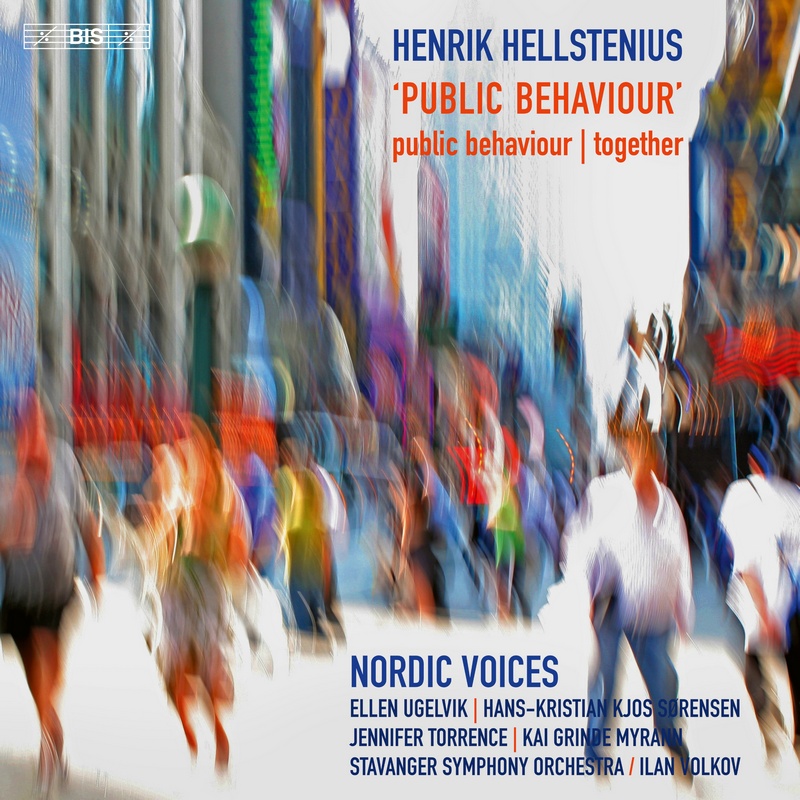I want to flag up two recent albums for which i’ve contributed liner notes, both of which focus on music from Norway, and both of which have coincidentally been released around the same time.

The first is My Microtonal Piano, an anthology of contemporary pieces performed by Oslo-based pianist Sanae Yoshida. The five composers on this album all take a distinct, individual approach in their exploration beyond the conventional limits of the piano. Perhaps the most immediately accessible is Eivind Buene’s Three Studies for Microtonal Piano. Taking his starting point from three sonatas by Franz Schubert, Buene’s music is obviously rooted in a familiar musical landscape of harmonic relationships. Buene uses microtonality as colouration, part of a balance between stability and fluidity, where harmony is made liquid while coalescing around common focal points in a way that is easy to grasp and follow. There’s something similar going on Øyvind Mæland’s Boiling Web, though its familiarity is more stylistic than harmonic. The music is lively and playful, initially displaying three distinct layers: a bouncy upper surface, moody bass below and a driving percussive beat running through the middle. The piece moves away from, and back to, somewhere similar to its starting point, but dead repetitions undermine the playfulness.
A particularly striking aspect of the two pieces by Michelle Agnes Magalhaes is their elusiveness. Snow Soul, a tribute to poet Emily Dickinson, progresses such that everything sounds decorative, like an embellishment of something rather than the thing itself. Magalhaes’ approach to such elusive sounds is playful, informed by an interesting collection of equally ambiguous clunks and skitters, later becoming more punchy and forceful. Her two-minute homage to German textile artist Anni Albers, Tecelagem, is similar in many respects, though low tolling notes in the bass act as points of reference to navigate through the music’s weaving ornamental texture. Most experimental of all these pieces is 唄-媒-培 by Keiko Harada, which moves furthest away not only from the conventional tuning of the piano, but also its timbre and treatment. The music exists in a harmonic / timbral hinterland where sounds clunk, fizz and shimmer, where pitches often materialise only via their overtones or in the midst of a buzzing cloud of notes, or as brief unidentifiable impacts. The result is a complex, even paradoxical equilibrium, disconnected and interconnected, cool and warm, lyrical and alien, all at the same time.
Andreas Gundersen’s Microtonal Pieces bring us back full circle, to a soundworld much more rooted in familiarity. Gundersen’s experimentation is limited to pitch, aligning a piano and a MIDI-piano that are tuned a quartertone apart from each other. The effect of this is not merely to expand the instrument but to enable the pianist to straddle two parallel worlds. Each of the Microtonal Pieces is lyrical yet halting, a heartfelt but broken music seemingly made up of half-remembered fragments. There’s a distinct sense that, even if both the pianos were in tune with each other, the music would still remain, somehow, out of tune with itself.
Released by LAWO, My Microtonal Piano is available on CD and download.

i’ve been fascinating by the music of Henrik Hellstenius for several years now, and contributed liner notes to his previous portrait disc, Places of Sounds and Words, released by LAWO in 2022. His latest album, Public Behaviour, explores similar territory, examining the nature and challenges of interpersonal connections.
A tension between internal and external, the self and the other, is etched into the music on this album, being as it is concerned with the anxieties, desires and uncertainties that lurk within each of us and guide, shape, distort and determine our relationship with everyone else. In one sense, everything about these compositions, from their titles – Public Behaviour and Together – to their modes of expression and every single word uttered in them, suggests that they are directed outward, to society in general and to those individuals in particular with whom some form of intimacy is desired. Yet it’s not difficult to hear much of what is expressed as being part of an intense inner monologue: a litany of doubt, affirmation and frustration being whispered, said, sung and shouted in a way that, though musically loud, one can imagine is actually silent, playing out as an unspoken, internal argument derived from the thoughts, feelings and fantasies that we either wish we could or never would dare to say out loud. The music thereby embodies not merely a tension, but a paradox, being simultaneously internal and external, spoken and silent.
The inextricability of the music from the words – the latter seemingly generating the former – lends these compositions a somewhat abstract quality that further reinforces their paradoxical nature. It begs the question: if abstract, as they often seem, why do they also feel so emotionally fraught? Public Behaviour, performed by Nordic Voices and the Stavanger Symphony Orchestra, conducted by Ilan Volkov, moves through an abstract yet earnest 90-seconds section ‘Am I?’ before a finale, ‘The Square’, where the music’s punchy directness is militated against by a Sartre-like alienation and a breakdown of language itself, with loud exclamations of meaningless babble. The conclusion of Together, also featuring Nordic Voices, conducted by Kai Grinde Myrann, leaves the question similarly unresolved. Its fifth movement is blank – “Do I / Can I / Will I / Need I” – yet also expansive, intensifying the scrutiny, a process made meditative in the instrumental sixth movement. Yet in its final movement things break down, dissolving into fatalistic resignation, culminating in a motif of despair also heard in Public Behaviour.
These are in some respect stark works, offering neither consolation nor resolution, but instead manifesting the problem directly. Yet in so doing, Hellstenius makes clear that, for all the doubts and despair that might plague or even thwart our efforts, the ultimate prize – connection, community – makes the attempt not merely worthwhile but utterly necessary.
Released by BIS, Public Behaviour is available on SACD and download.
